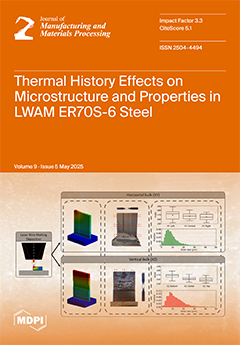Carbon–Kevlar hybrid composites are being increasingly recognized as suitable materials for aerospace, automotive, and construction applications due to their unique combination of strength, toughness, and safety. Prior to their use, extensive testing and validation are essential to ensure that these composites meet the
[...] Read more.
Carbon–Kevlar hybrid composites are being increasingly recognized as suitable materials for aerospace, automotive, and construction applications due to their unique combination of strength, toughness, and safety. Prior to their use, extensive testing and validation are essential to ensure that these composites meet the specific safety and performance standards required by each industry. In this study, the mechanical performance and behavior of five different types of Carbon–Kevlar hybrid composites were investigated. In addition to microstructural investigations, mechanical tests were also carried out, including tensile, bending, impact, and micro-hardness tests. The investigated composites were Carbon–Kevlar hybrids without orientation, with a symmetrical orientation, and with the addition of TiO
2 nanoparticles at weight percentages of 3%, 4%, and 5%. The results showed that the mechanical properties of these composites could be significantly influenced by different fiber orientations and the addition of TiO
2 nanoparticles. In particular, the addition of TiO
2 nanoparticles increased the tensile strength, hardness, toughness, and breaking strength. Of the composites tested, the composite reinforced with 5% TiO
2 nanoparticles exhibited the highest mechanical performance, with a 79.8 Shore D hardness, 406 MPa tensile strength, 398 N/mm
2 flexural strength, and 10.1 J impact energy. These results indicate that Carbon–Kevlar hybrid composites reinforced with TiO
2 nanoparticles have excellent mechanical properties that make them highly suitable for armor plating, helmets, and vehicle armoring in particular and a wide range of other industrial applications in general.
Full article





